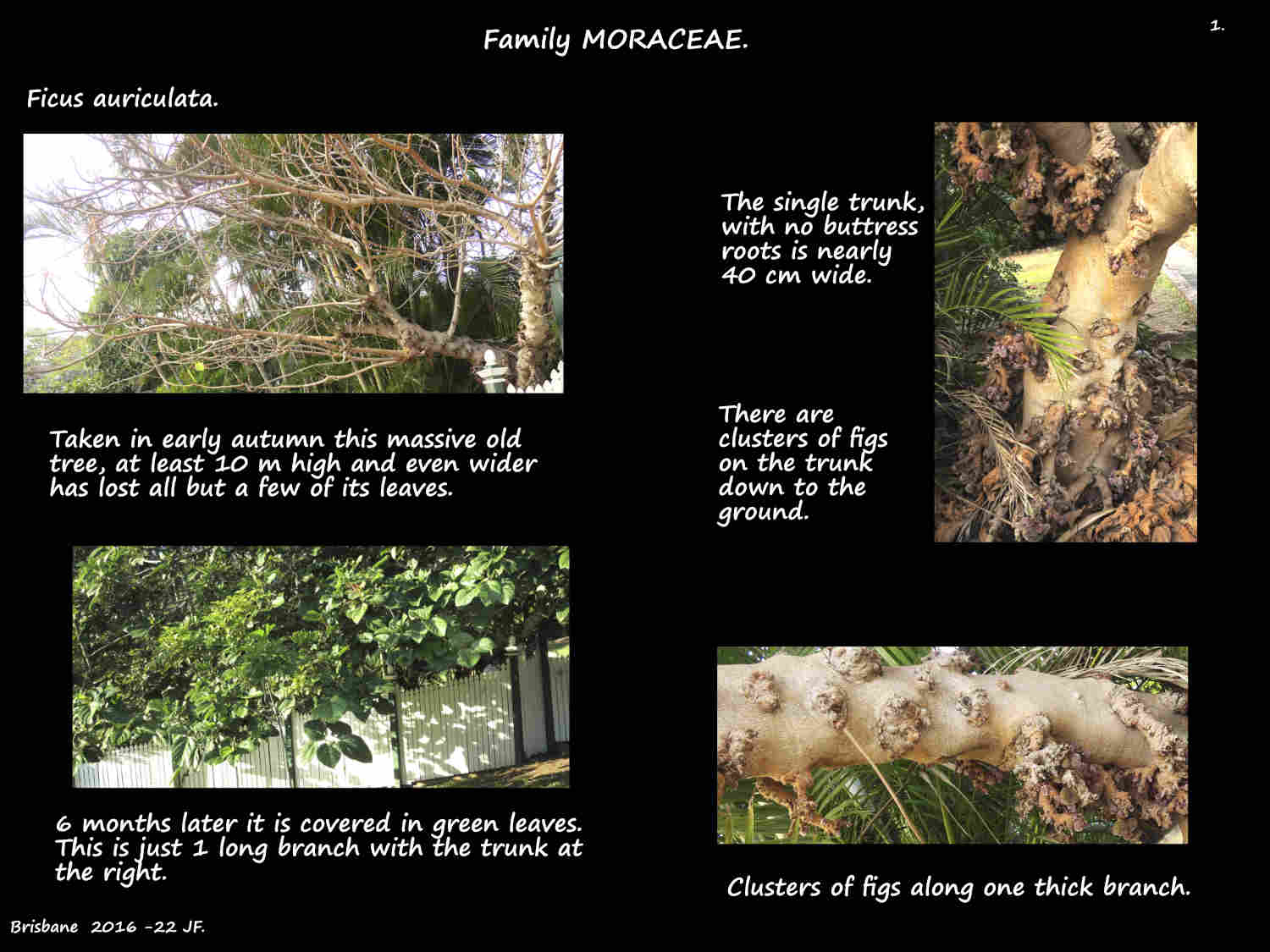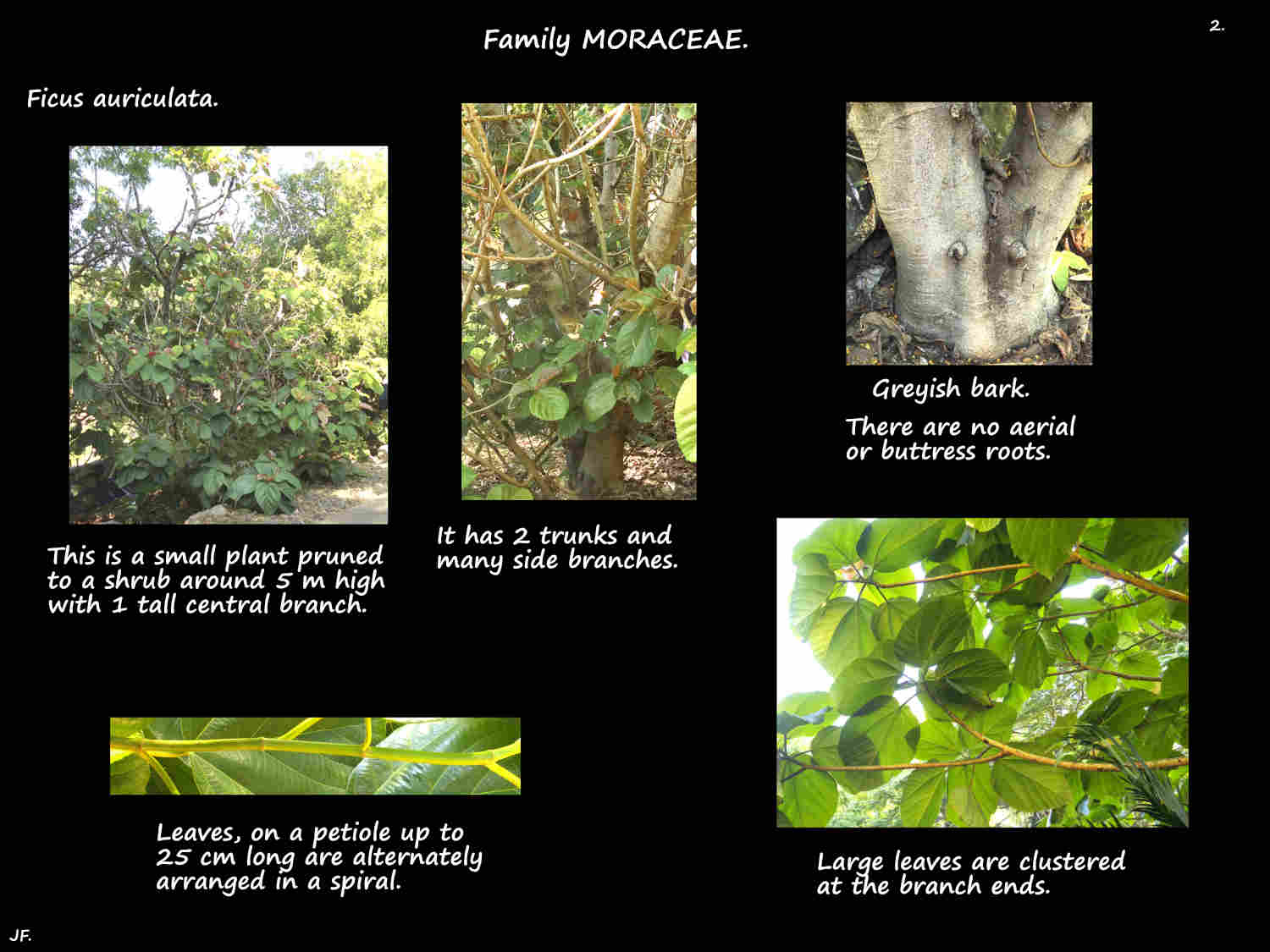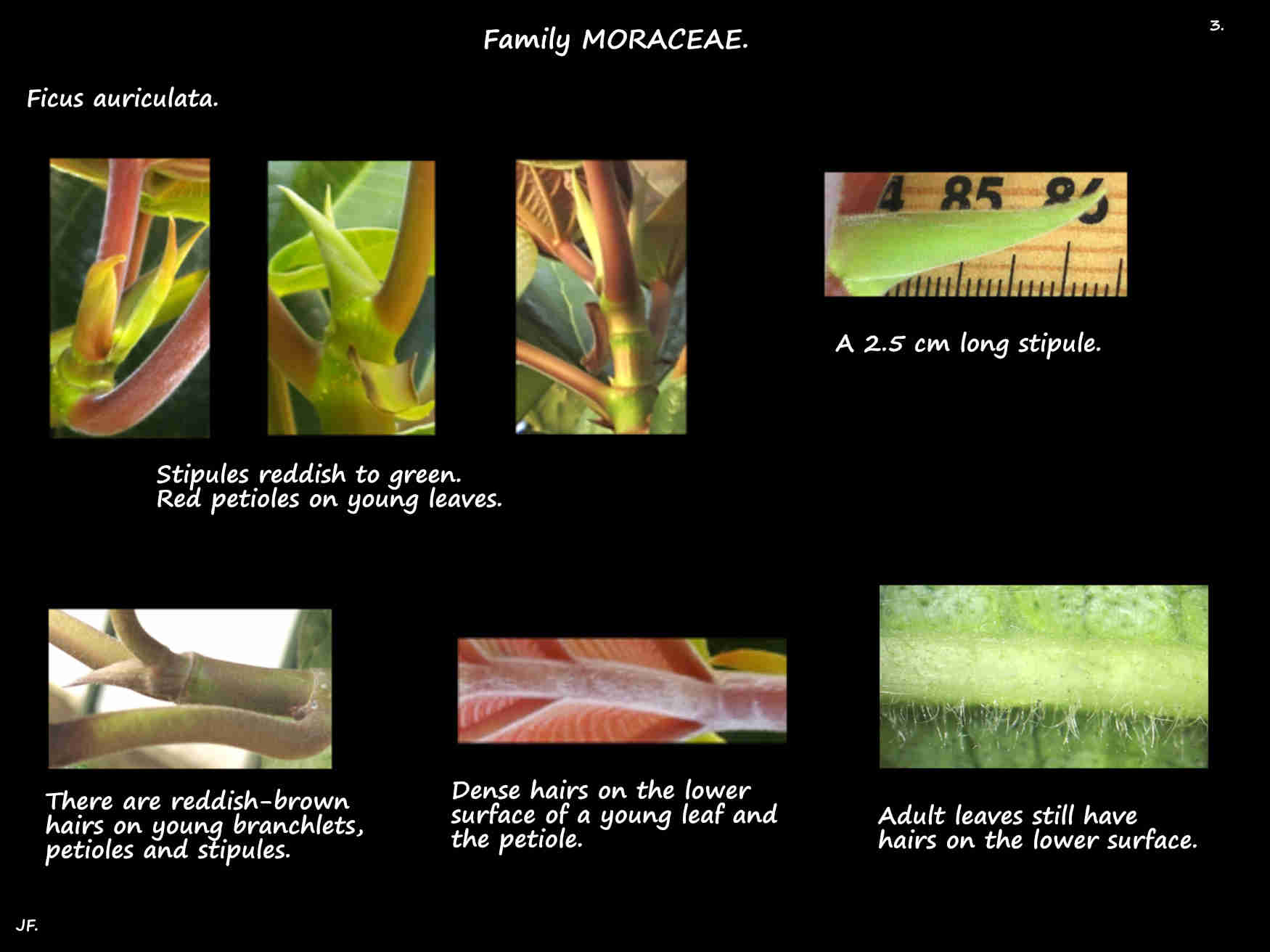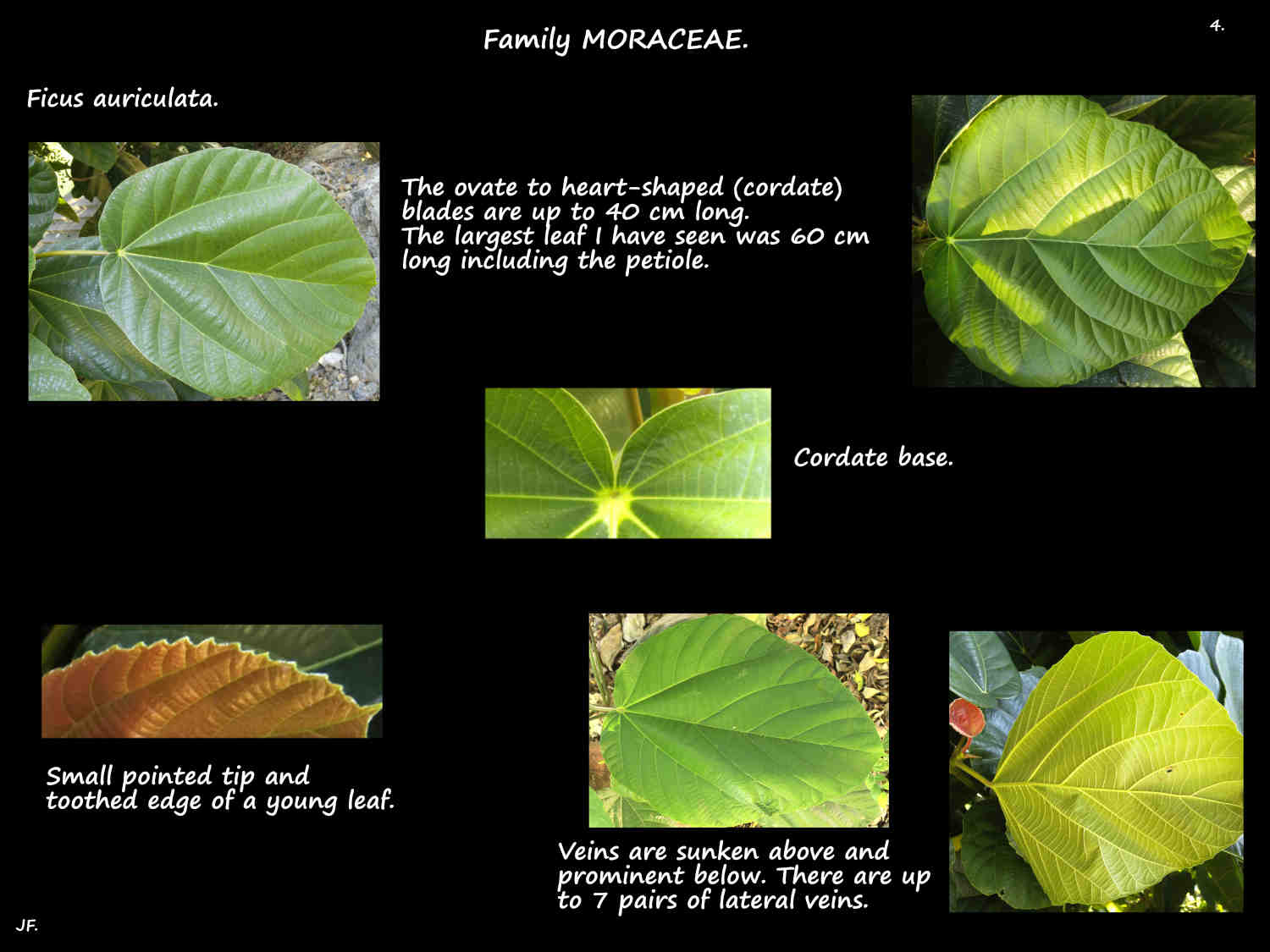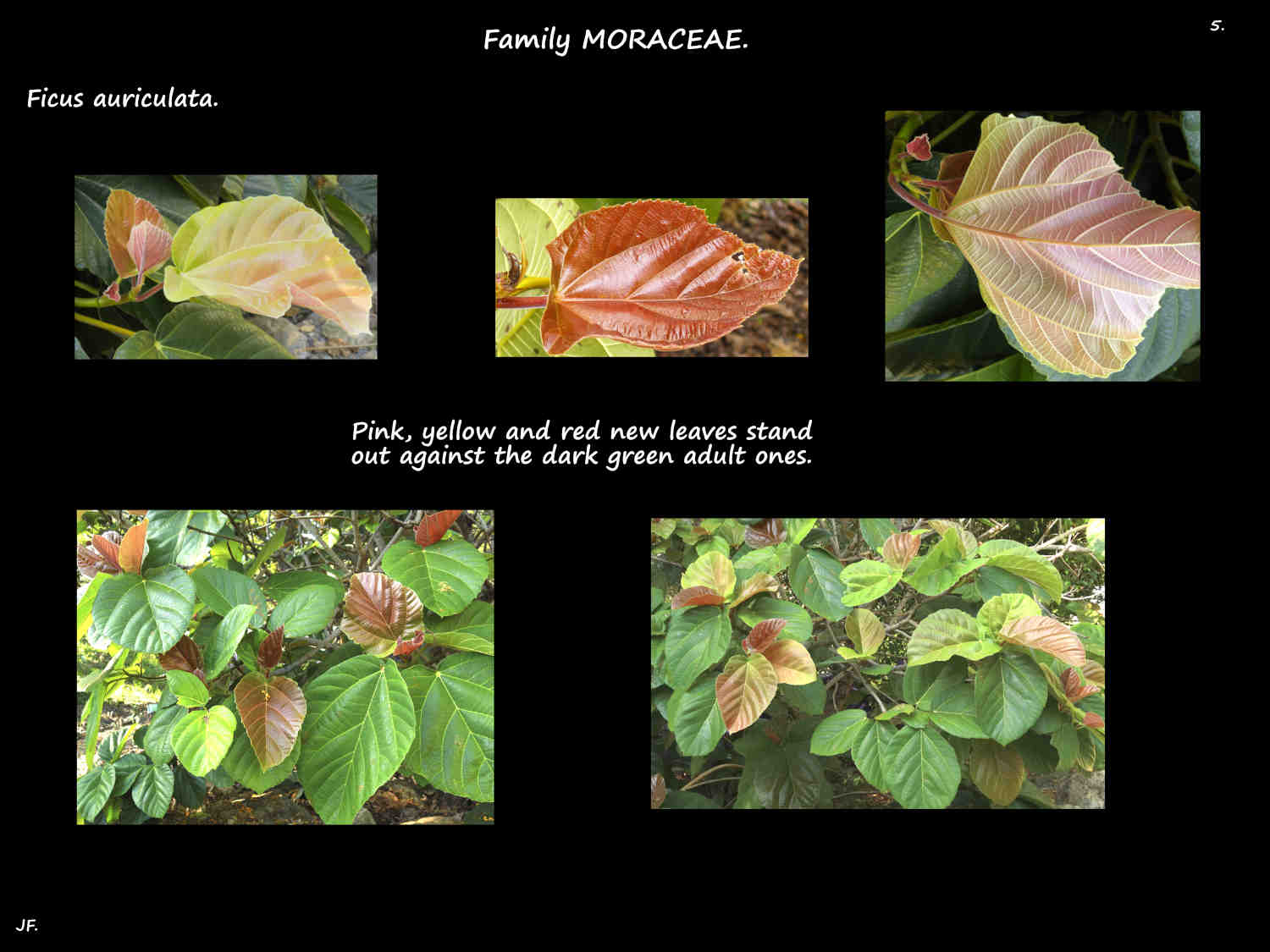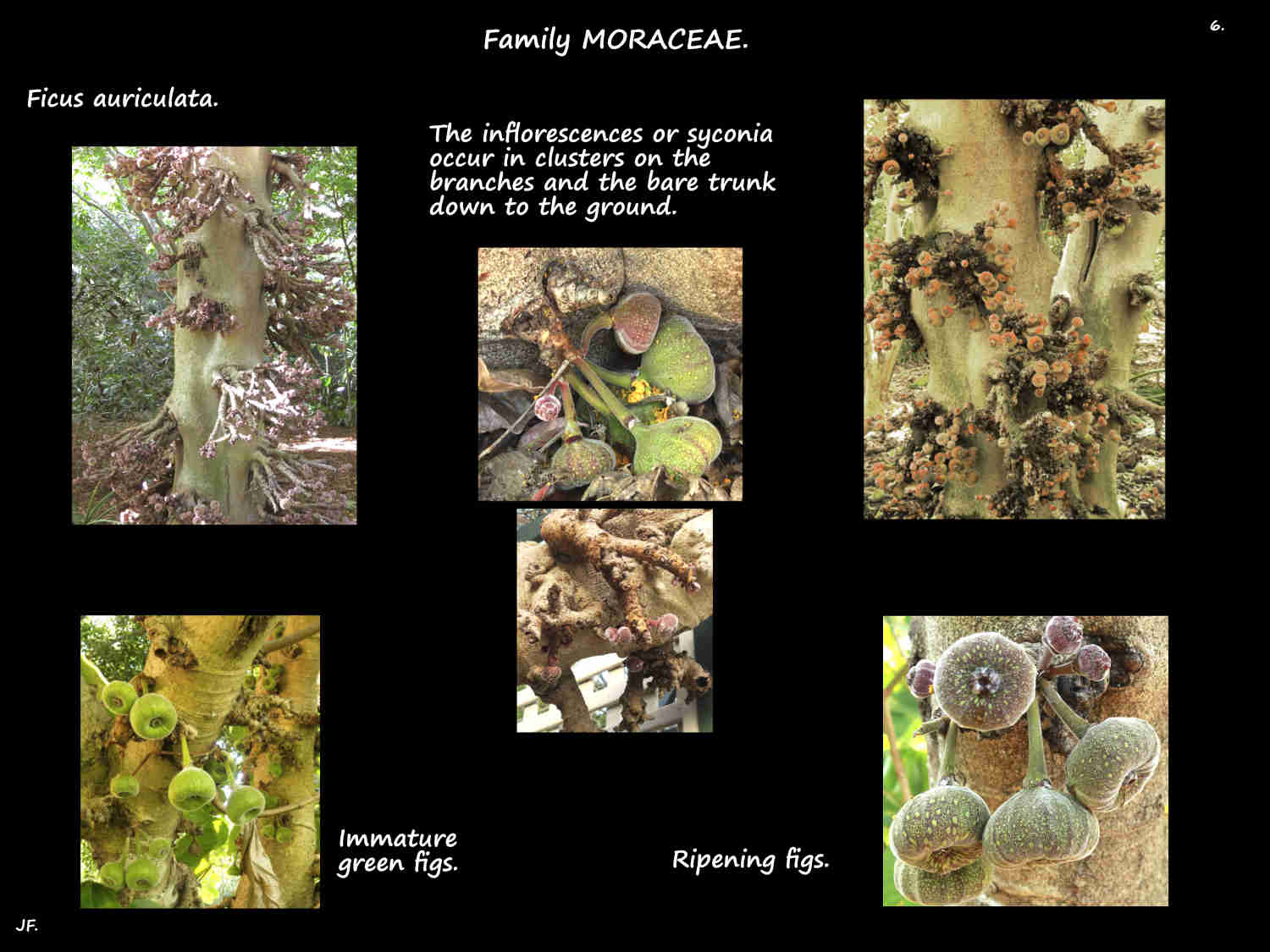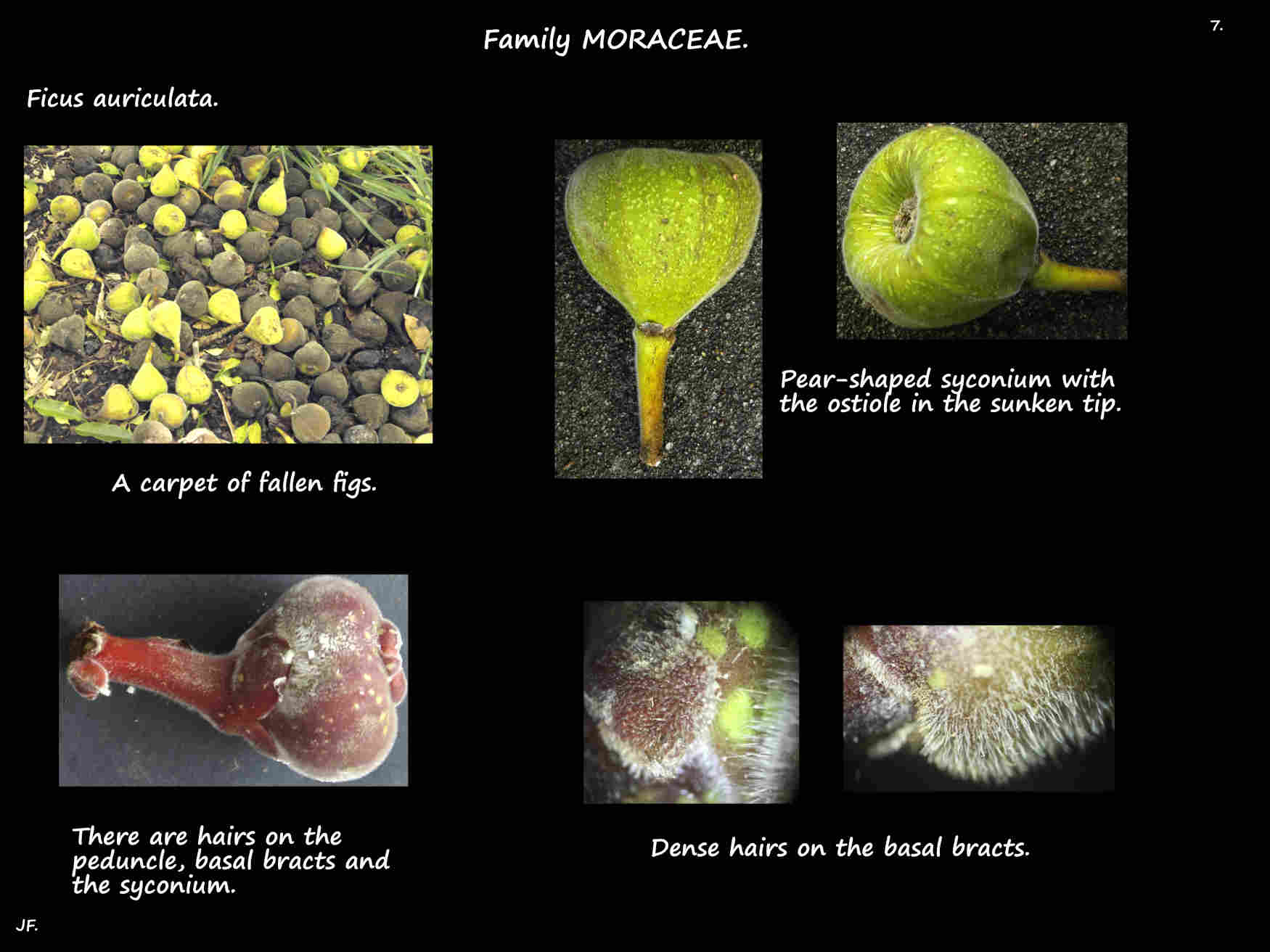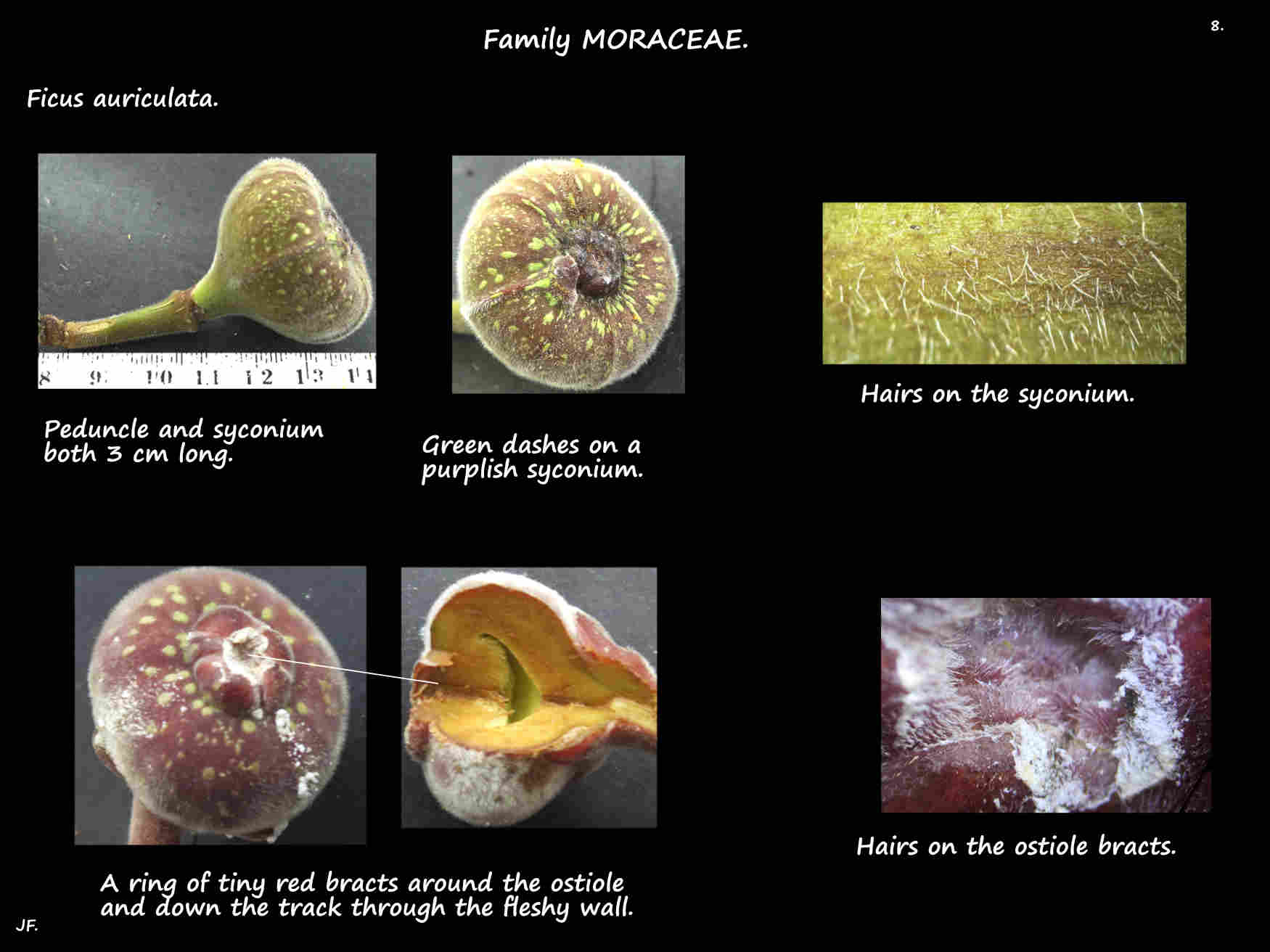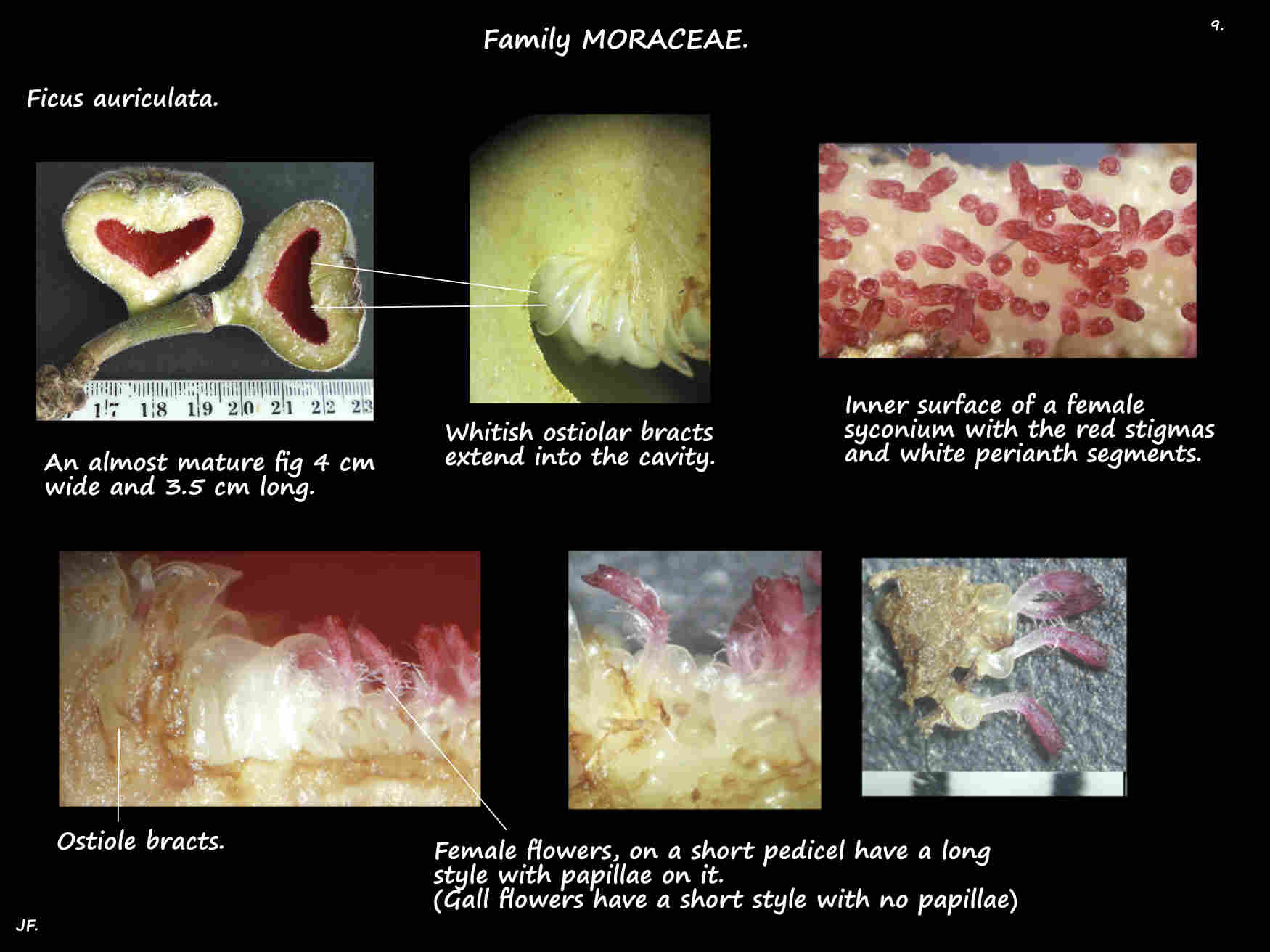Ficus auriculata.
Native to India and the Indochina area Roxburgh or Elephant ear figs are in Family Moraceae > Genus Ficus > Subgenus Sycomorus.
They are large shrubs around 4 m high or trees up to 10 m high with a wide horizontal spread.
The one or more trunks have grey-brown bark and small branchlets have reddish-brown hairs.
They have a rounded crown, no aerial roots, are not stranglers and parts exude a whitish latex.
The large simple alternately arranged leaves are concentrated at the branch ends.
Petioles can be as short as 5 cm but are usually 15 to 20 cm long.
Stipules around the leaf buds are around 2.5 cm long.
Leaf blades are from 10 up to 30 or 40 cm long and almost as wide.
The ovate to cordate blade has a pointed tip and a slightly toothed edge most obvious on young leaves.
The upper surface is smooth and shiny but there are hairs on the lower surface especially on young leaves.
The veins are raised on the lower surface with the midvein and the lowest lateral pair the most obvious.
There are up to 5 or 6 other pairs of lateral veins.
Young leaves are pink or red then green.
The inflorescences are syconia found in clusters on the branches and the trunk even down to ground level.
Each one is on a peduncle or stalk around 5 cm long.
There are 3 basal bracts at the top of the peduncle and small ones around the apical opening or ostiole.
There are hairs on the peduncle, basal bracts, the syconium and the ostiolar bracts.
The pear-shaped syconia are hollow with unisexual flowers lining the inner wall.
Trees have syconia with either male or female flowers and both also have gall or sterile female flowers.
Male flowers, on a short pedicel around 1.5 mm long have 3 delicate perianth segments.
There are 2 stamens with 1 mm long anthers on 2 mm long filaments.
The anthers open inwards through longitudinal slits.
Female flowers, on a short pedicel have 3 pointed perianth segments, an ovary with one ovule and a long lateral style with a feathery or papillate stigma.
Gall or sterile female flowers, found in male and female syconia are on a long pedicel with 3 pointed perianth segments.
Their ovary has a short lateral style with a small funnel-shaped stigma with no papillae.
A female wasp carrying pollen from a male syconium enters a female one through the ostiole loosing her wings in the process.
The pollen on her transfers to the feathery stigmas of the fertile female flowers.
As she cannot reach the ovary of the short female flowers she lays her eggs in the ovaries of the taller gall flowers.
Newly hatched wasps mate and the females leave the syconium.
If a female wasp enters a male syconium her pollen is wasted but she can lay a lot of eggs in the gall flowers.
The fruit are figs up to 8 cm long on a peduncle almost as long.
The pear-shaped figs have a sunken ostiole and are covered in short hairs.
They ripen from green to brown then red with raised green spots.
Each fertilised ovary can develop into a small achene with one seed.
J.F.

